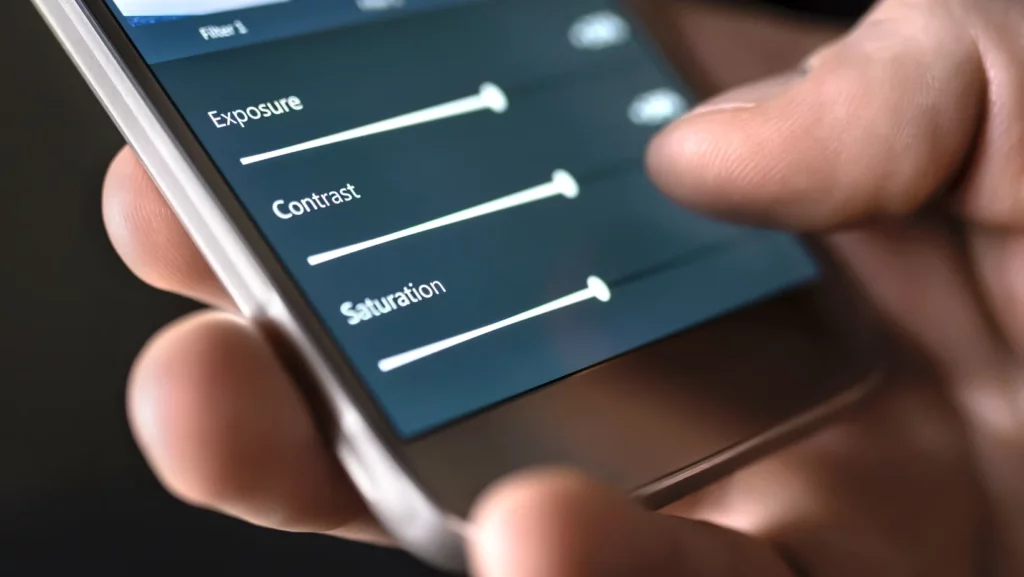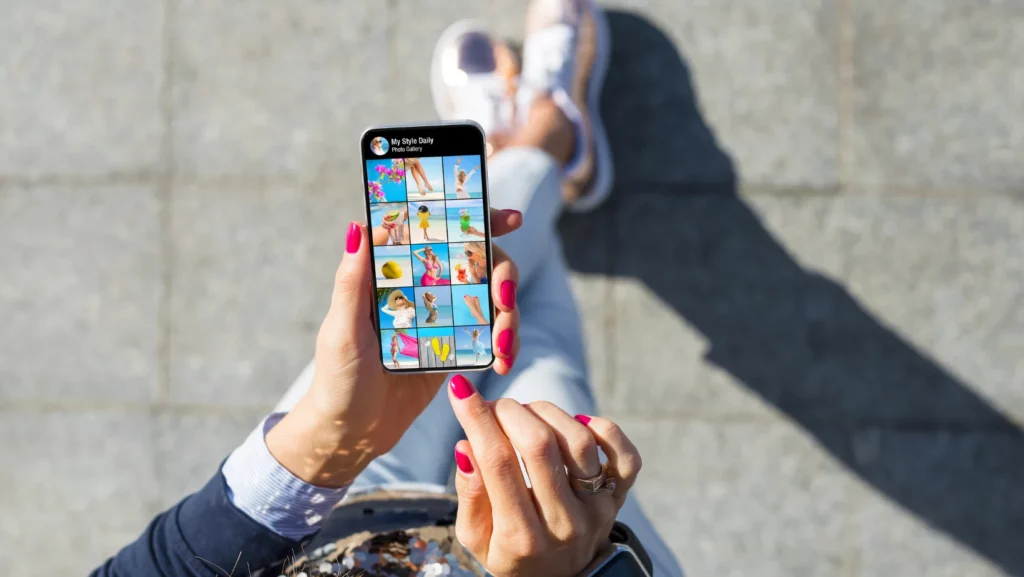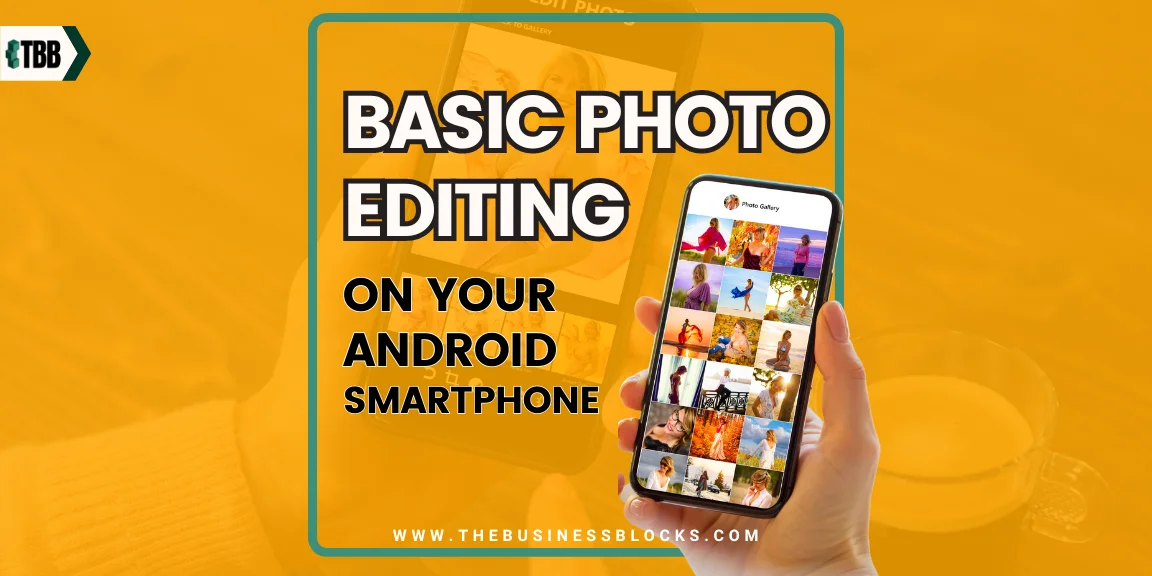In the modern era of technology, we are always capturing moments with our smartphones. But sometimes, these moments don’t turn out to be as perfect as we want them to be. This is where photo editing comes in handy. With just a few simple adjustments, you can transform your ordinary photos into extraordinary ones.
In this guide, we will be discussing the basics of photo editing on your Android smartphone. Let us help you unleash your creativity and take your photos to the next level.
Do you want to make your pictures pop and leave your friends in awe?
Discover the incredible world of basic photo editing right on your Android smartphone. From enhancing colors to perfecting lighting, you’ll learn the essential skills to turn your ordinary photos into extraordinary works of art.
Get ready to unleash your inner creative genius and take your photography to new heights – it’s time to transform your snapshots into stunning masterpieces. Our step-by-step guide will walk you through the basics of photo editing on your Android smartphone.
Keep reading and get ready to amaze your friends with your newfound photo editing skills!
Did you know?
- According to data presented by OnlyAccounts.io, around 40% of smartphone users in the top markets regularly used photo editing apps in 2023.
- From Statista’s Consumer Insights, the United States is the top market for photo editing apps, with 42% of smartphone users followed by Japanese and Indians.
The Basics: Understanding Photo Editing Tools and Techniques

Before diving into the world of photo editing, it’s essential to understand the tools and techniques at your disposal. Most photo editing apps come with a variety of features that allow you to adjust colors, lighting, and other elements of your photo.
Some popular tools include:
Brightness and Contrast
These two settings work hand in hand to adjust the overall lighting of your photo. Brightness controls how light or dark your image appears, while contrast adjusts the difference between light and dark areas.
Saturation and Vibrance
These settings allow you to boost or reduce the intensity of colors in your photo. Saturation affects all colors equally, while vibrance focuses on the more muted tones.
Exposure
This setting controls the amount of light that enters your camera lens. Increasing exposure will brighten your photo while decreasing it will darken it.
Crop and Rotate
These features allow you to adjust the composition of your photo by cropping out unwanted elements and rotating the orientation of your image.
Filters
Filters are pre-set adjustments that can instantly change the look and feel of your photo with just one click. Experiment with different filters to find the perfect one for your photo.
Reasons and Benefits of Photo Editing on Your Smartphone
Now that you understand the basics of photo editing tools, let’s discuss why it’s worth investing your time in this skill.
- Enhance Visual Appeal: By making simple adjustments to your photos, you can enhance their visual appeal and make them stand out from the rest.
- Correct Imperfections: Photo editing allows you to fix any imperfections in your photos such as red-eye, blemishes, or unwanted objects in the background.
- Add Personal Touch: Photo editing allows you to add a personal touch to your photos by choosing different color tones and filters that reflect your style and personality.
- Improve Social Media Presence: With the rise of social media, having eye-catching photos is essential. Photo editing can help you improve your social media presence by creating stunning images that will attract more followers.
- Save Time and Money: Instead of investing in expensive cameras and equipment, you can achieve high-quality results with just a few adjustments on your smartphone.
Step-by-step Guide to Photo Editing on your Android Smartphone

Let’s say that you are not using any photo editing apps, and you want to edit a photo taken with your default camera app.
Here is a step-by-step guide on how to do basic photo editing on your Android smartphone:
Step 1: Open the Photo
Open the photo you want to edit from your camera roll or gallery.
Step 2: Choose Your Editing Tool
Select an editing tool from the bottom of your screen. You can start with brightness and contrast adjustments.
Step 3: Adjust Brightness and Contrast
Slide the brightness scale to adjust the overall light in your photo. Then, use the contrast slider to adjust the difference between light and dark areas.
Step 4: Enhance Colors
Use the saturation and vibrance sliders to boost or reduce the intensity of colors in your photo.
Step 5: Apply Filters (Optional)
If you want to add a filter, choose one from the available options. You can also adjust the strength of the filter by sliding your finger left or right.
Step 6: Crop and Rotate (Optional)
If necessary, use the crop and rotate tools to adjust the composition of your photo.
Step 7: Save Your Edited Photo
Once you’re satisfied with your edits, tap on the save icon to save your edited photo in your camera roll or gallery.
And yes! It’s that simple. With just a few easy steps, you can enhance your photos and make them stand out.
5 Photo Editing Apps you can try on your Android smartphone
If you want to take your photo editing skills to the next level, here are five popular apps that you can download from the Google Play Store:
- Snapseed: This app offers a wide range of powerful tools and filters for advanced photo editing.
- Collage Maker: This app allows you to create photo collages with multiple photos and various layouts.
- VSCO: This app allows you to edit photos with pre-set filters inspired by film photography.
- Pixlr: With a user-friendly interface and a variety of tools, this app is perfect for beginners in photo editing.
- Adobe Photoshop Express: This app offers basic editing tools as well as a variety of filters and effects.
These are just a few of the many photo editing apps available on the market. Experiment with different apps to find the one that suits your needs and style.
Edited Vs. Unedited: Which is Better?

Some people argue that edited photos are not authentic, but the truth is, that photo editing has been around for decades. Even before digital cameras and smartphones, photographers would use techniques to enhance their photos in the darkroom.
In today’s world, where social media plays a significant role in our lives, having visually appealing photos can make a difference. However, it’s essential to use photo editing in moderation and not alter the image’s authenticity.
At the end of the day, it’s up to personal preference. Some people prefer their photos unedited, while others enjoy playing around with different editing tools. As long as you’re happy with your photos, that’s all that matters. So go ahead and have fun experimenting with your photos on your smartphone!
Are there Disadvantages to Editing Photos on Your Smartphone?
While there are many benefits to editing photos on your smartphone, there are also a few drawbacks to consider. Here are some potential disadvantages:
- Limited Tools and Features: Compared to professional photo editing software, the tools and features available on smartphone apps may be limited.
- Quality Loss: Editing photos on your smartphone may result in a loss of quality due to compression and file size limitations.
- Battery Drain: Editing photos can use up a lot of battery power, so be sure to have your phone charged or plugged in while editing.
- Screen Size Limitations: The small screen size of smartphones may make it difficult to edit photos precisely and accurately.
- Storage Space: Edited photos may take up more storage space on your phone, so it’s important to regularly back up and delete old photos.
Despite these potential disadvantages, editing photos on smartphones can still be a convenient and efficient way to enhance your images. As long as you keep these drawbacks in mind and use photo editing in moderation, you can achieve great results with just your smartphone.
Tips and Tricks for Basic Photo Editing on Your Android Smartphone

Now that you have a basic understanding of some essential tools, here are some tips and tricks to take your photo editing skills to the next level:
- Use Natural Light: When taking photos, natural light is always the best option. It will make your photos appear more vibrant and avoid harsh shadows.
- Don’t Overdo it with Filters: While filters can enhance your photos, using too many can make them look over-edited and unnatural. Stick to one or two filters that best fit the aesthetic you want to achieve.
- Experiment with Different Tools: Don’t be afraid to explore and experiment with different tools and settings. This will help you understand their effects better, and you might discover new ways to enhance your photos.
- Take Advantage of Editing Apps: There are plenty of free and paid editing apps available for Android smartphones. Find one that has the features you need and familiarize yourself with it to get the most out of your photo editing.
Frequently Asked Questions About Basic Photo Editing on Your Android Smartphone
Q: Can I edit RAW photos on my Android smartphone?
A: Yes, there are editing apps available that support RAW photo editing. Some popular options include Adobe Lightroom and Snapseed.
Q: Can I undo edits if I’m not satisfied with the result?
A: Most editing apps have an undo button or a history feature that allows you to go back to previous edits. However, it’s always a good idea to save your original photo before making any changes.
Q: Can I edit photos without downloading any apps?
A: Yes, most Android smartphones come with built-in editing tools that allow you to make basic adjustments and apply filters. However, for more advanced edits and features, it’s recommended to download a dedicated editing app.
Q: How can I learn more about photo editing techniques and skills?
A: There are many online resources available, such as tutorials, articles, and videos, that can help you improve your photo editing skills. You can also join online communities or attend workshops to learn from experienced photographers and editors.
Final Thoughts
Mastering basic photo editing on your Android smartphone is a game-changer for any aspiring photographer. With just a few taps and swipes, you can enhance colors, correct lighting, and turn ordinary photos into captivating works of art. Whether you’re sharing memories on social media or creating a portfolio, these skills will take your photography to the next level. So, don’t wait any longer – start exploring the world of mobile photo editing today and unlock your creative potential right in the palm of your hand. Happy editing!

